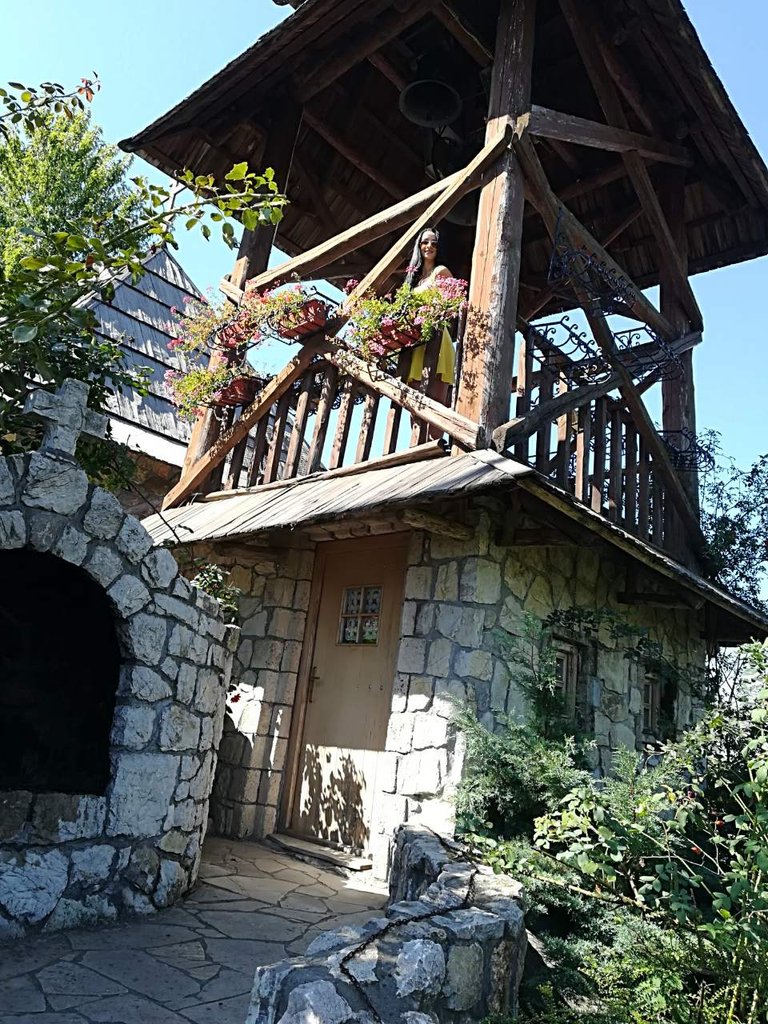
At the exit of the third kilometer from Bijeljina to Pavlović bridge is the Ethno village "Stanišići." Ethno village "Stanišići", removed from the present time and space, takes us back to our ancestors and nature, and awakens in us the admiration of the simplicity of the former way of life. It is a rest for the eyes and soul, where man becomes nobler and wiser listening to the murmur of the brook and the spin of the mill.

Ethno village "Stanišići" was established in 2003 thanks to the inspiration of Boris Stanišić. Over several years he traveled around the Serbian villages in central Bosnia in search of old houses and objects that preserve the idea of a time and culture of living of the late 19th and 20th century. The result is an authentic mountain village in the middle of the Semberija plains.
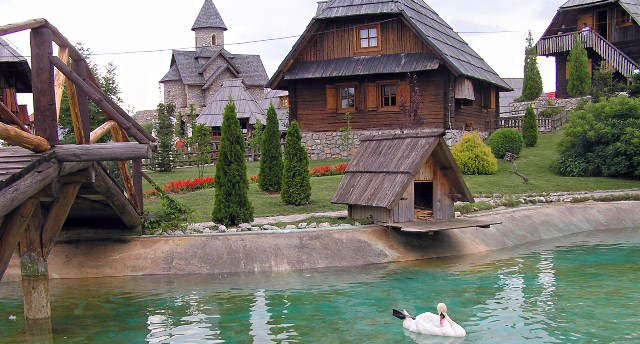
The village is now divided into two units, one showcasing the secular life and it is built out of wood. It consists of wooden houses - chalets with furniture that belonged to them for centuries. Houses are linked by paved stone paths, and in the center of the village are two lakes. The second unit is of a spiritual character and it features medieval architecture built in stone, which is in fact a set of replicas of historical and religious significance.
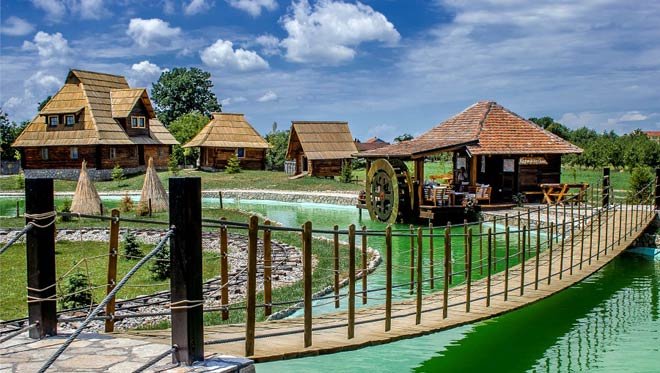
The village consists of several mills, dairies, blacksmith shops, a stone well, a barn and authentic wooden houses, showing furniture and costumes. The mill potočar was designed in 1937 and is still in use like the mill from 1917 where flour for bread that is served in the restaurant is ground. Inside is everything a miller found necessary in order to stay in it during the grain grind season. The dairy dates from 1948. It is a small building for milk processing and storage of dairy products, with all wooden containers. Dairies were well ventilated and clean, and only women who worked in them were able to enter.
The houses belong to the Dinaric type, made of wood and with a high roof. It is a small apartment complex where houses are authentic on the outside, and the interior is modified to the needs of the guests. A gift shop is located in one of the houses which offers handicrafts and homemade products. A several other buildings are in the construction phase in which a smithy, weaver and pottery workshop will be located.

All these buildings units are located near a lake and stream that winds between them, and are connected with paths paved with stone. There is a constant flow of clean water from the stream all over the village and its course symbolizes the source of life, existence and duration.
The spiritual unit brings us even deeper into the past and it is made out of replicas of objects from different places marked by Orthodoxy. The secular part of the village is connected to it by a large stone bridge, which is a replica of the Goat Bridge in Sarajevo. By it we come to the Baptistery, which is modeled after a small church that exists in Alaska.
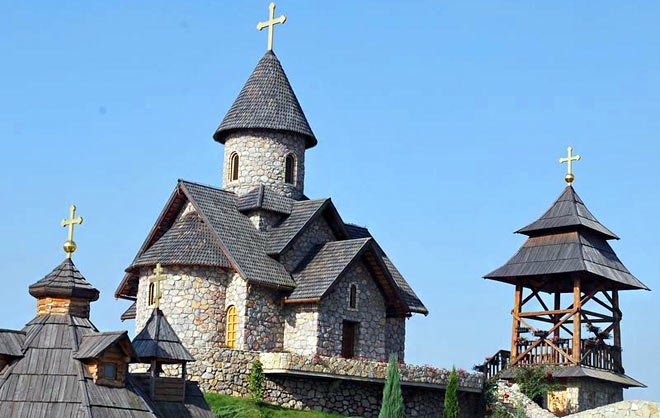
In the vicinity of the monastic house, on the lake, is an amphitheater with 380 seats, meant for performances in the open air.
At the heart of this complex is the Monastery of the Holy Father Nicholas, a replica of the monastery Kumanica, endowment of Nemanjić and in it relic particles of Tsar Uroš and the Holy Father Nikolai are deposited. A coffin with particles of the relics of St. Nicholas' father is also found. Apart from the monastery there is a monastery house (residence) which is an extraordinary example of medieval construction.
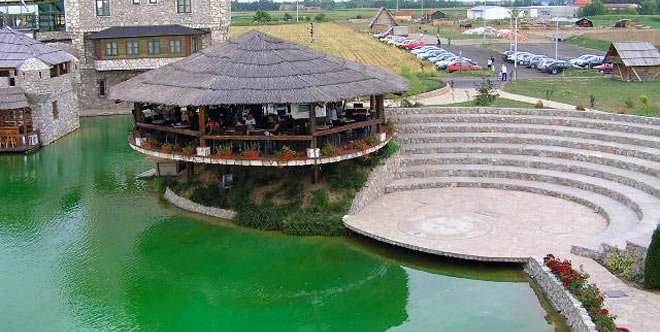

Wonderful place to visit 😁
Beautiful. I have to visit this place this spring.
Yes, it's really beautiful :)
This is a beautiful place, hope i can visit you one day!
You should
Hi! I am a robot. I just upvoted you! I found similar content that readers might be interested in:
http://www.visitmycountry.net/bosnia_herzegovina/en/index.php/tourism/eco/94-turizam/eko/901-ethno-village-stanisici
Thanks